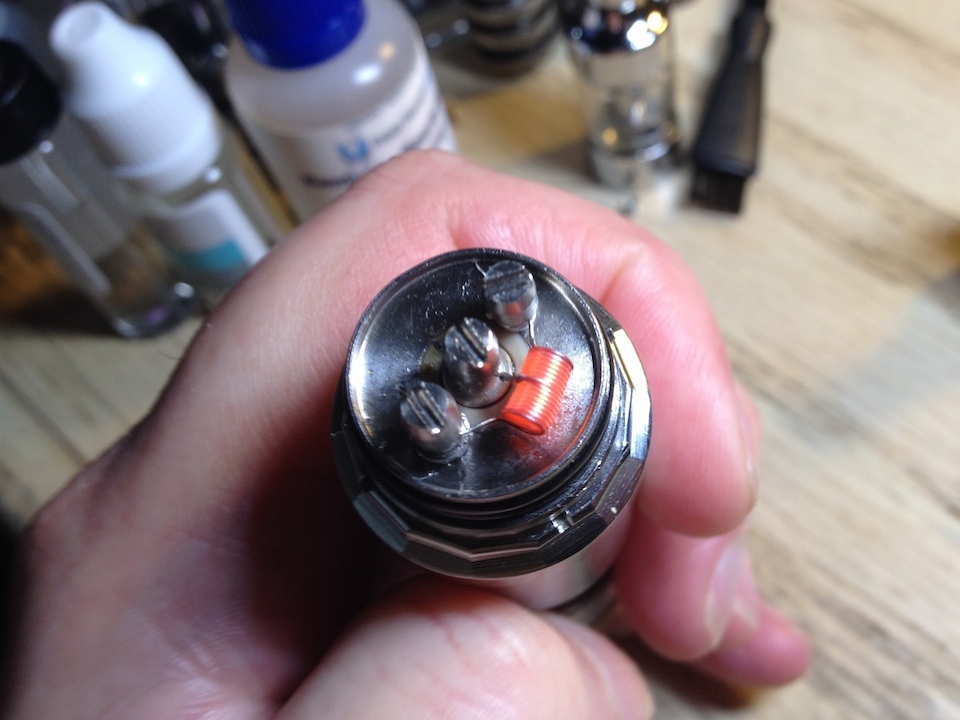Ive read a bit of MacTechVpr's talk of adhesion- and I think that is what has been making me think I might need tons of pressure and how if I dont 'see and feel' adhesion happening that im nowhere near getting it.
The answer to my #3 helps me in thinking that I may be indeed closer than I might have thought. Breaking wires and bending brackets and rods pulling like a madman might not be needed then...?.....wwwhhheeeww thats a relief

Hoot, to save ya some time thought I'd drop in. Start with a screwdriver or pin vise. It'll be easier to see. Wind just tight enough to add some turns. You'll see them loosely line up and maybe even squeeze together. If you release the tension, they'll likely separate at this point. Keep adding turns slightly increasing pull. Try to detect the point that they stop separating. If you take it off the bit and they're slightly separating (you may need magnification) you fell short of the mark. It's just a bit beyond the point that they stop trying to return to the
just bent state to pulling towards each other. That is, enough tension to cause the wire to begin to stretch.
You're right. We're not trying to tension it so much we've got a lighter gauge. Just enough that it can't get any tighter and starts to elongate. That's as close as nature will allow. When you pulse at this level of strain oxidation happens quickly often spontaneously from the first pulse (mind you I'm at sea level with plenty of O2). But that's the objective.
When you've hit the mark you likely will not need to apply any compression with a tweezer. Perhaps very slight pressure to suppress small micro-gaps or dark spots and only with a ceramic tweezers very softly during the short low-voltage burns while you're oxidizing. Don't immediately take winds to red-orange-yellow transition.
Make several loose, touching and at adhesion. Prep 'em and vape 'em. You'll see it takes perhaps quite a bit longer to anneal the spacers. For reasons noted earlier with the t.m.c. the tight contact and resulting oxidation will improve the vaporization rate. You will get a cooler denser vape result at the same power as spaced or tight contact. If this turns out too cool for your liking but you enjoy the richness, wind the next at a slightly lower resistance for more flavor and vapor.
When you've hit the mark you likely will not need to apply any compression with a tweezer. Perhaps very slight pressure to suppress small micro-gaps or dark spots and only with a ceramic tweezers very softly during the short low-voltage burns while you're oxidizing. Don't immediately take winds to red-orange-yellow transition. A full fire usually only as a final confirmation after you've observed a min of light oxidation (ideally) for all turns excluding end turns (we don't wan't them hot at all).
A t.m.c. tends not to fire from center out. The more uniform your wind and oxidation the more even the distribution. So they'll tend to fire more evenly, same color… and,
not so high a color temperature.
The indication of this is the vapor will
taste cooler and tend to drop towards the floor. Not so much merely diffuse or rise. This is due to the cooler higher density of the vapor.
But the most important indicator that you've succeded is when you've gone through a number of these and you're enjoying the same consistent vape. You've ended unpredictable changes in the vape due to coil distortion. You've even mangled your winds and see them stay coherent and vaping well.
That's it in a nutshell. Maybe after 3 years it's time I blog this. But I do enjoy exchanging with each of you.
Best of luck and a great vape!






